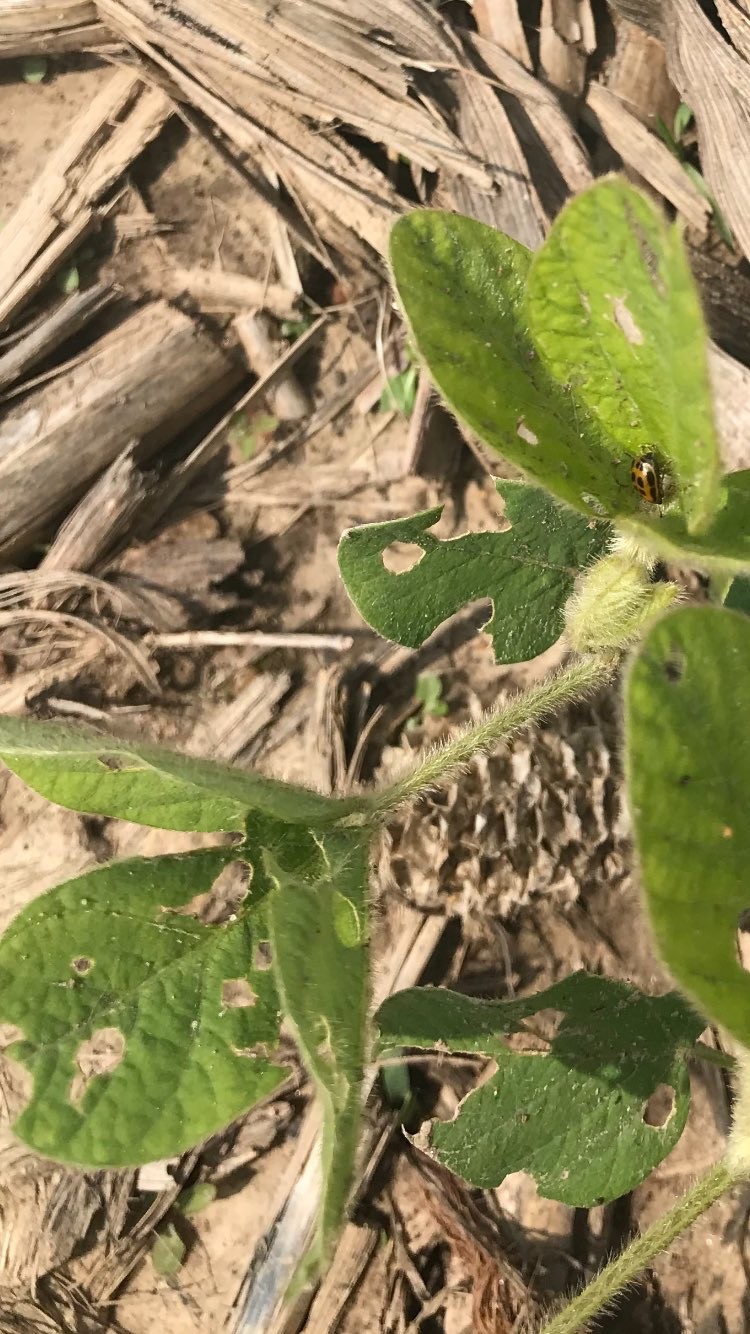The topic of planting soybeans early and with lower populations was something I talked about in depth with growers as an easy and affordable way to set up soybean field yield potential from the start. Unfortunately, as the weather did not cooperate for much of the state this spring, many plans for early planting and decreased populations began to slip away. With growers looking at fields of soybeans that weren’t planted “according to plan” the question of yield potential often comes up.
It is important to remember there are three keys to growing high yielding soybeans and those haven’t changed because of planting date. Focusing on making the most of what we can change in the field will be the difference in making or breaking the yield barriers come this fall.
Do not skimp on the fungicide: Fungicides will continue to play a large role in protecting the yield potential of the soybean plant. We want the plants in the field to be under as little stress as possible. With saturated soils and warming temperatures, we are setting up for an ideal environment for diseases to flourish. Looking at a R1 application of foliar fungicide would be a great place to start. Soybeans will abort anywhere from 20-80% of the flowers that they produce and will produce flowers for roughly 3-5 weeks; let’s make sure that we are creating the best environment for the plant to produce as many flowers as possible. Following up with an R3 fungicide would also be recommended.
Control weeds: Weed management has also been a struggle this year with saturated soils and uncooperative weather. Getting a residual product down in each pass across the field will help keep the continued germination of weeds at bay. This is especially a concern on late planted soybeans that could potentially struggle to reach canopy. Keep an eye on plant back restrictions for your 2020 crop plan as the calendar progresses.
Scout often: Even though it may be painful to continue to scout crops in a challenging year, it may be more important now than ever. Even with seed-applied  insecticides buying soybean growers some time, pest monitoring is still important. We want to capture as much sunlight as possible and insect feeding can hinder that. Reports of thistle caterpillars, yellow striped armyworm, variegated cutworm larvae and bean leaf beetle are all starting to come in, just to name a few. And Japanese beetles will soon be added to that list. Watch for thresholds and timing of application for insecticide treatments.
insecticides buying soybean growers some time, pest monitoring is still important. We want to capture as much sunlight as possible and insect feeding can hinder that. Reports of thistle caterpillars, yellow striped armyworm, variegated cutworm larvae and bean leaf beetle are all starting to come in, just to name a few. And Japanese beetles will soon be added to that list. Watch for thresholds and timing of application for insecticide treatments.
To the right: Bean Leaf Beetle photo with feeding present from Dr. Victoria Kleczewski.
If you planted soybeans click here to learn what to expect in a recent article posted in WallacesFarmer.
And if you are discouraged thinking that late planting has robbed your crop’s yield potential remember that many growers plant double-crop soybeans after wheat during the second half of June. Those beans, managed correctly and weather permitting, can yield 60 to 80% of full season beans.
Although we will not know what choices were correct this challenging season until grain is in the combine, continue to put your best foot forward to maximize the potential of the 2019 soybean crop.


 and then
and then